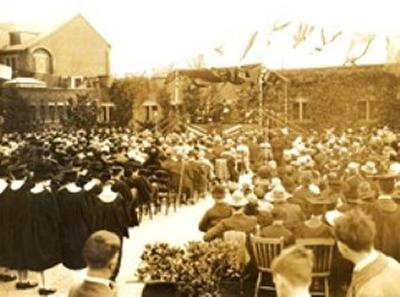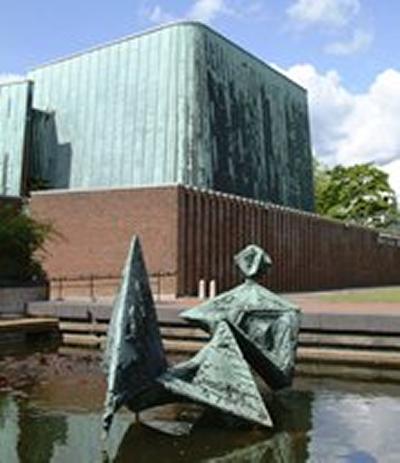Learn about our history through our major milestones, achievements, awards and archive images.

1862 – The Hartley Institution is formed
In its first years the Hartley Institution had just 700 day and evening students enrolled – just a fraction of the more than 20,000 full time students we have at the University today.
1896 – We change our name to Hartley College – signifying a shift from the part-time teaching of adult evening classes, to the full time teaching of students.
1902 – We adopt the word university in our name for the first time, becoming Hartley University College.

1919 – The new Highfield campus is finally opened, providing much needed space for the rising student population and a number of new faculties.
The campus had originally opened for a few weeks in 1914 before the outbreak of the First World War, before being offered for use as a War Hospital for the duration of WW1.
At this time the campus consisted of one arts building, 28 shared lecture rooms, and a block of laboratories for biology, chemistry, physics and engineering. We now have more than 70 buildings over six different campuses, and a number of world-class specialist research centres for oceanography, engineering, optoelectronics and medicine among others.
1931 – The Chemistry and Engineering departments gain a national reputation, winning a coveted £10,000 grant to expand their facilities.
Part of this grant money is used to build our first ever windtunnel. Primarily used for aeronautical research, our windtunnel has gone on to play a major role in ensuring Olympics Team GB cycling success among many other prestigious projects.
1935 – Our first academic library opens (The Turner Sims Library).
We now have five libraries containing more than 3 million books, journals, and reports – plus over 50,000 e-books.
1936 – Our student newspaper Wessex News launches.

1947 – Pioneering radio engineer Eric Zepler founds the Department of Electronics – one of the first of its kind in the world.
We are still one of the best places in the world to study electronics – we are ranked 1st in the UK for electronics and electrical engineering.
1952 – We become the University of Southampton after Her Majesty The Queen grants us a royal charter.
1964 – The Nuffield Theatre opens, allowing students to produce their own plays to world-class standards.
Over the last 50 years The Nuffield Theatre has been recognised as a major force in British theatre, creating original award winning touring productions and nurturing the next generation of theatre practitioners.
1967 – The new Students' Union building is completed, offering on-site catering, shopping, indoor sports and a debating chamber for the first time.
The facilities at the Students' Union are now even more extensive, including 5 bars and pubs, spaces for events and live music, a cinema, a dance studio, sports activity spaces, and numerous meeting rooms for all our clubs and societies.

1995 – Southampton Oceanography centre opens (now the National Oceanography Centre [NOCs]).
This world leading facility created in partnership with the National Environment Research council cost £50 million, and continues to give our students access to the best resources in the world in this area.
2000 – Southampton Photonics launches.
This start-up enterprise is the largest ever successful university spin-out, born out of research from our optoelectronics department.
We are well-known for our ability for applying our research to real life problems, aiding industry and contributing solutions to the major issues facing our society, from curing cancer and major diseases, to studying the sociological and economic consequences of an ageing population.
2004 – Sir Tim Berners-Lee, inventor of the World Wide Web, becomes a professor at our computer science department.
2005 – Professor Wendy Hall is named ‘inspiring woman of 2005’ after becoming the first female Senior Vice President of the Royal Academy of Engineering.
2011 – We launch our first set of podcasts and lectures on iTunes U – one of the first UK universities to do so.
2011 – Enrolment starts at our brand new Malaysian campus.
2013 – Our first Massive Online Open Course (MOOC) starts, offering free higher education from our world class academics to anyone from around the world.
From very humble beginnings, the University of Southampton has become a world- renowned institution. This fact is a testament to the hard work and determination of our staff and students to make a difference in the world.
With the support of talented, hard-working students like you we hope to continue to make a real impact on the important issues affecting us today.
Find out what it is like to study at the University of Southampton today